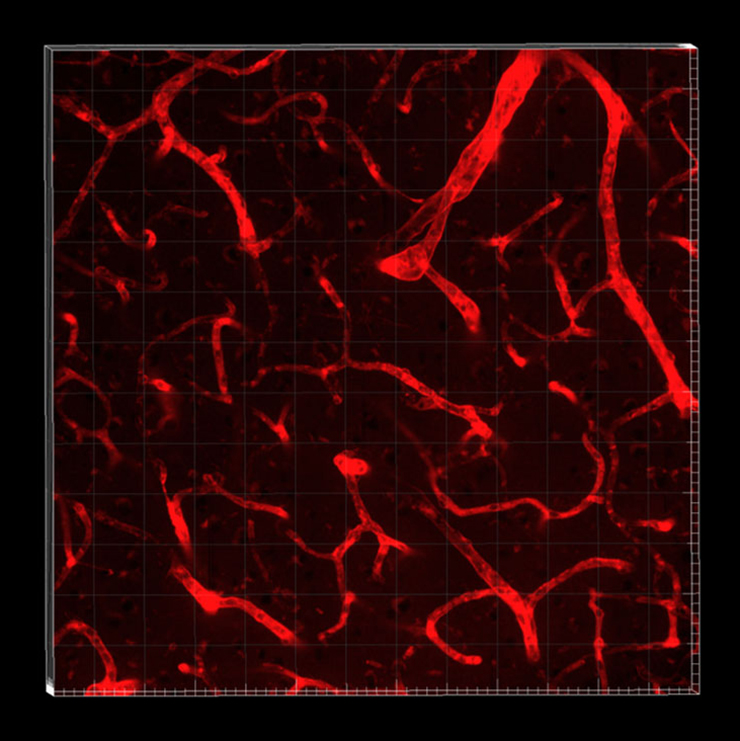Characteristic microglial features in patients with hereditary diffuse leukoencephalopathy with spheroids (HDLS)

Iba1 immunohistochemistry revealed that microglia showed a relatively uniform and characteristically delicate morphology with narrow cytoplasm and thin, winding processes accompanying many knot-like structures (a, b). Ultrastructurally, the rough endoplasmic reticulum showed vesiculation and the polyribosomes were disaggregated in the microglial cytoplasm and processes, indicating of depressed protein synthesis (c). These morphological alterations of microglia seem to be associated with the pathogenesis of HDLS, and suggest that HDLS is a primary microglial disorder. Tada M, et al. Ann Neurol 2016; 80: 554-65.
Ex vivo optical imaging of human brain lesions

As various morphological abnormalities can cause the state of epilepsy, it is needed to investigate the epileptogenic mechanisms based on the etiologically different foci individually. To achieve this aim, we investigate the visualized neural activities of surgically resected human brain tissues ex vivo.
Small vessel disease: To clarify the pathomechanisms of cerebral microangiopathy

To overcome vascular dementia due to cerebral small-vessel disease (SVD), it is necessary to clarify the pathomechanisms of small vessel degeneration. However, it is still difficult to examine the actual three-dimensional (3D) structure of such vessels in terms of functional anatomy and pathology. Here we apply a 3D analytical method with the CUBIC tissue clearing technique (Cell Rep 2018) for visualizing the structure of vessel networks in the brains of patients with SVD.
Morphological differences of astrocytic tau pathology in globular glial tauopathy

Globular glial tauopahty (GGT) is a new category of 4-repeat (4R) tauopathy proposed by Ahmed et al. in 2013. GGT is characterized pathologically by globular glial inclusions. GGT cases are classified into three pathological subtypes and we then investigate the pathological details of the GGT subtypes with special reference to the morphological features of tau positive inclusions.
Autosomal recessive cerebellar ataxia: clinicopathologic and genetic analysis

Autosomal recessive cerebellar ataxia (ARCA) encompasses a diverse range of rare neurodegenerative disorders, in which cerebellar ataxia is the prominent feature. But, several patients with ARCA accompany extracerebellar symptoms. The genetic background and neuropathologic characteristics still remain unclear in a large proportion of the affected patients. To elucidate the causative genes of each patient, we perform the clinicopathologic and exome sequencing analysis of the patients.

